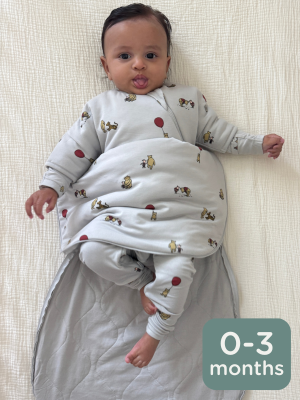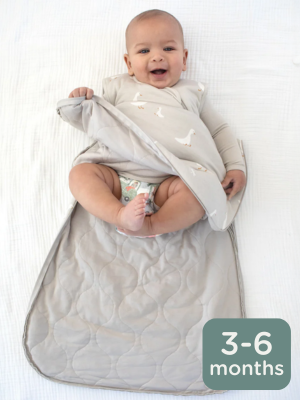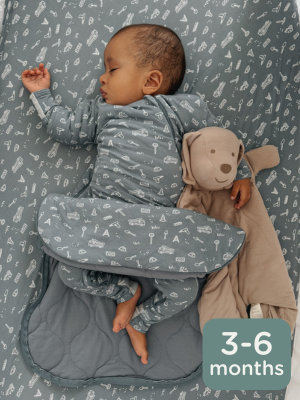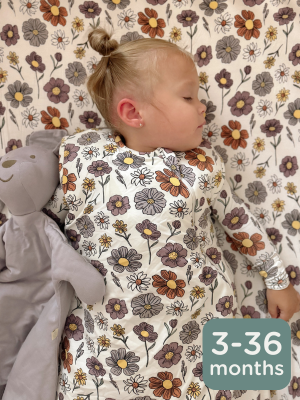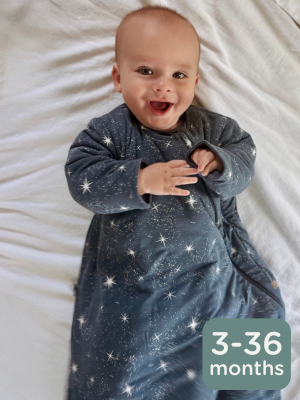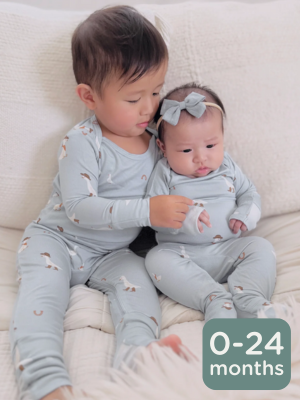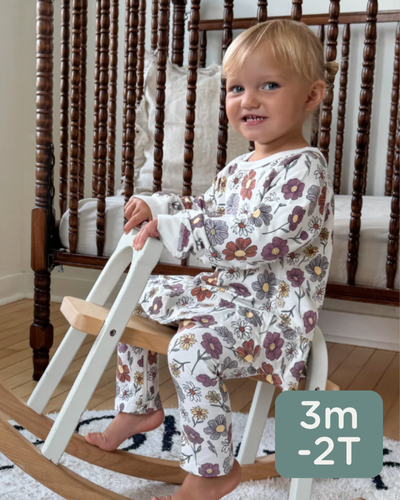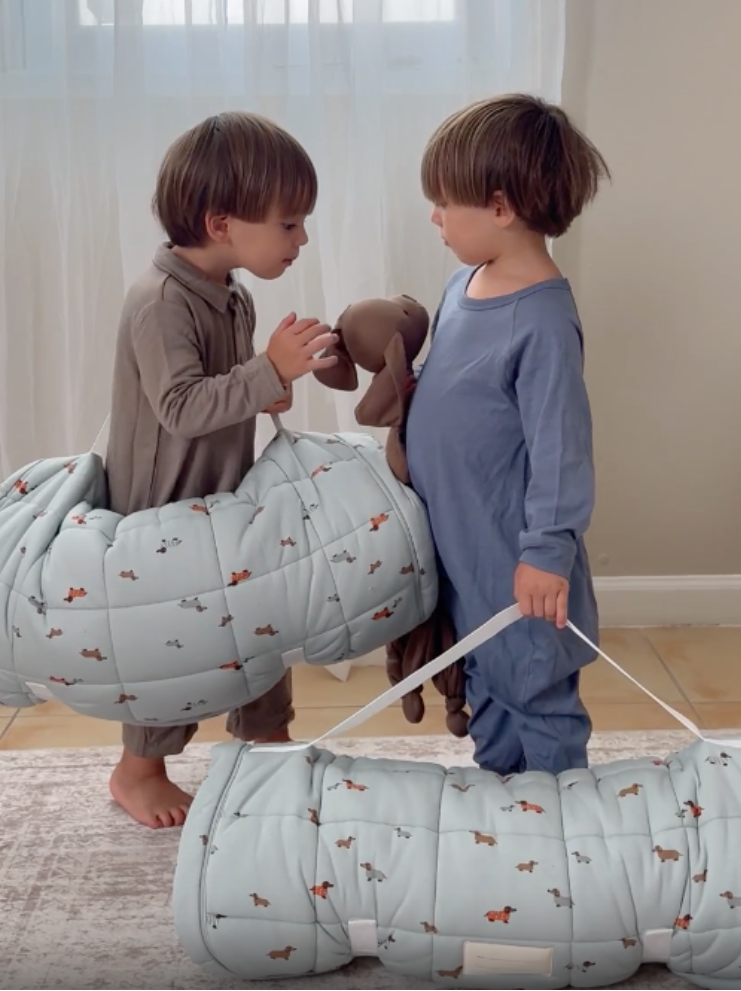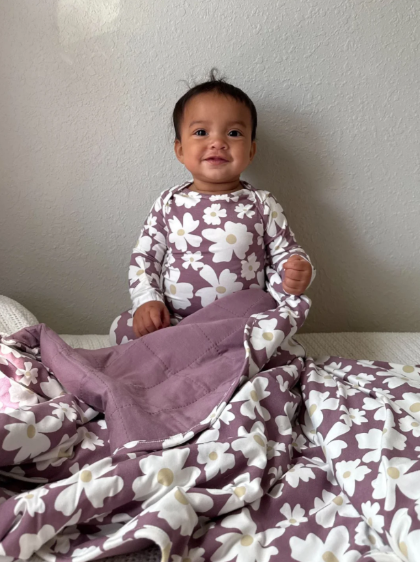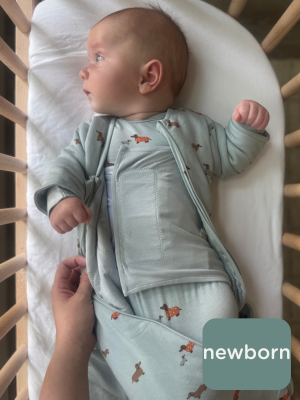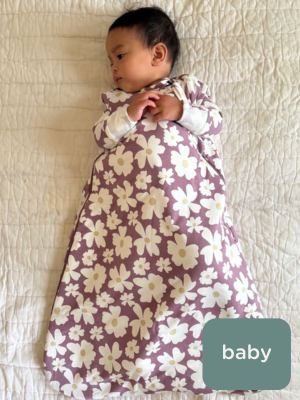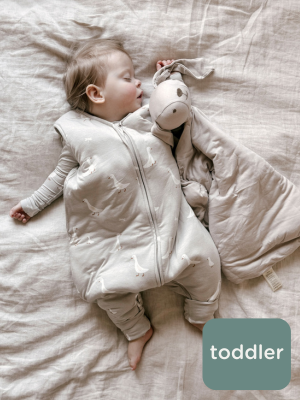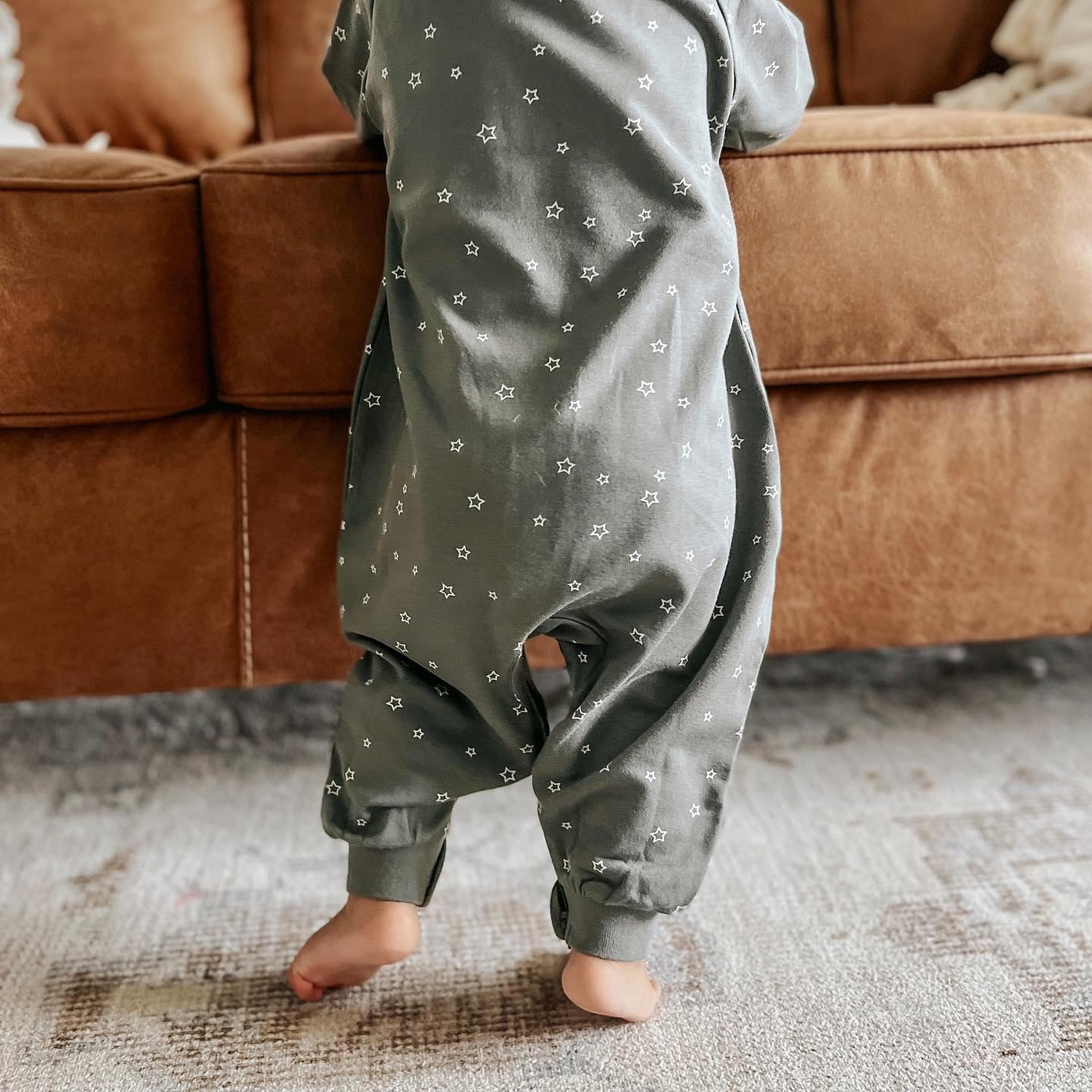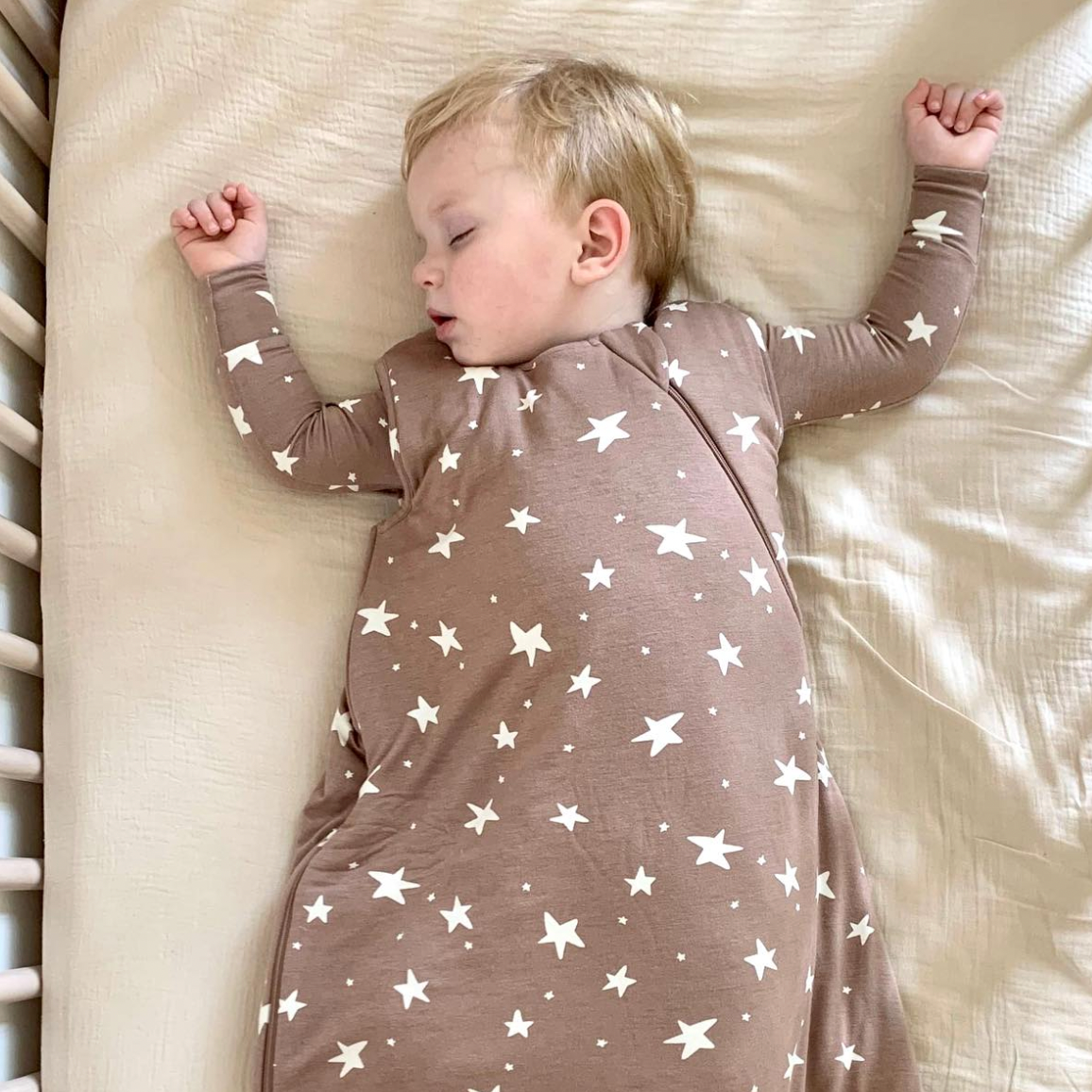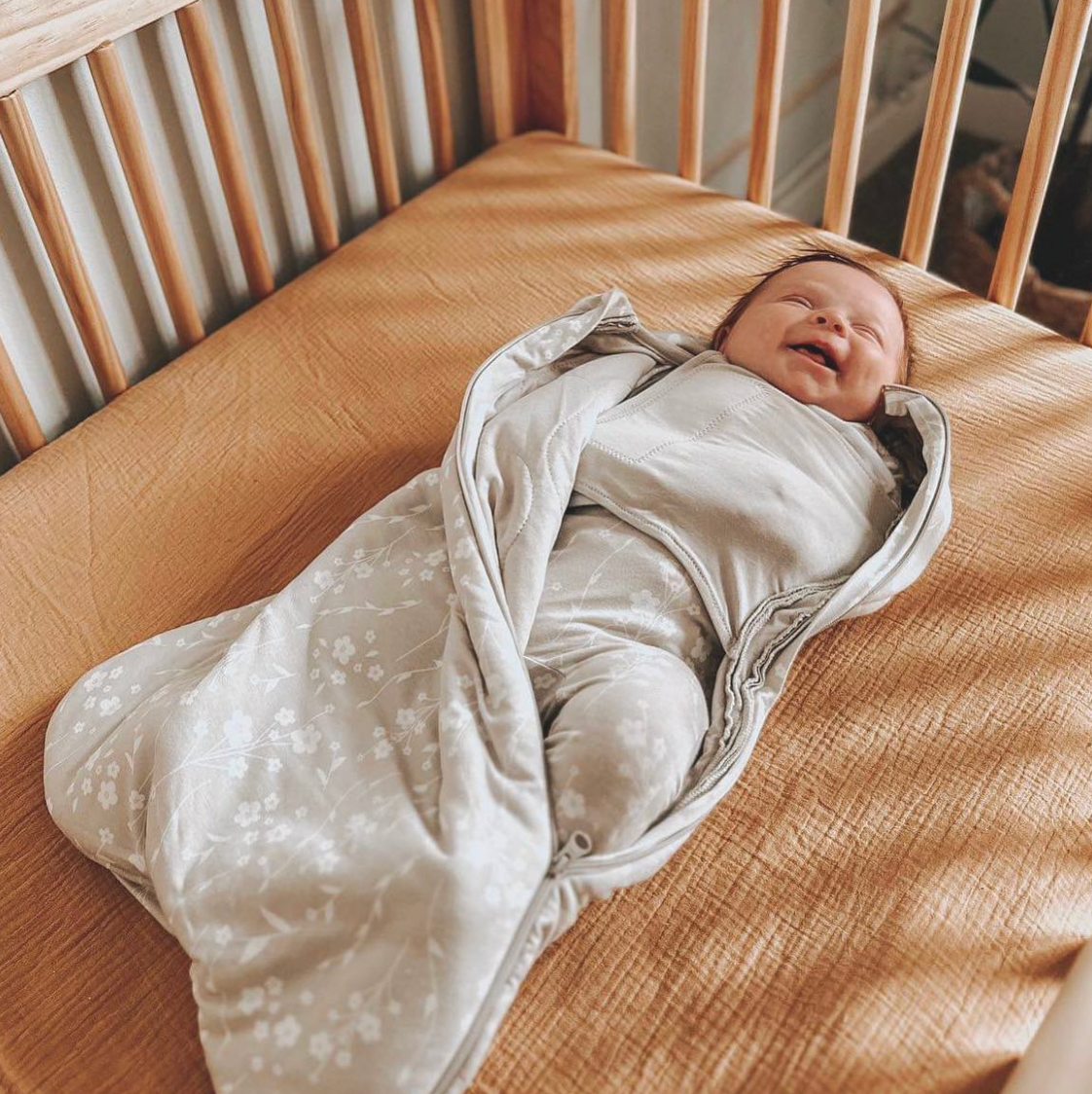Fleece is a common fabric used in our little ones’ sleep sacks and pajamas – but how does this uber warm material translate to TOG value? Learn the ins and outs of TOG so you can help dress baby for the comfiest sleep possible.
How TOG Works
TOG, or Thermal Overall Grade, is your go-to gauge for how snug and warm a garment or blanket can keep your baby. The higher the TOG, the more insulating it is.
You can’t always tell how warm a garment will be by the way it looks or feels. TOG ratings help standardize sleepwear so you can easily regulate your baby’s temperature. It’s important to choose the right TOG to keep baby comfortable and safe while they’re sleeping.
So, What TOG is Fleece?
When it comes to fleece, the TOG scale usually tips toward the cozier end, clocking in at around 3.0 TOG – but there’s way more to TOG than the fabric choice of your little one’s pajamas. A few other factors can affect the insulation of those PJs:
- Style. Long sleeves, footies, and other insulating design details of sleepwear can increase the TOG value.
- Layers. TOGs stack. Pair 1.0 TOG pajamas with a 2.5 TOG sleep sack and you've got a total TOG of 3.5!
- Thickness. A garment’s weight doesn’t necessarily correlate with its TOG value. Lightweight microfleece jammies might look and feel thin, but they can still keep your baby toasty, boasting a high TOG value.
Should Babies Sleep in Fleece?
When it comes to dressing your LO for sleep, it’s all about the temperature of their sleep environment. Because of it’s high TOG value and low-breathability, fleece is usually best saved for super chilly weather and very cool nurseries. Dressing your little one too warmly can cause them to overheat, which has been linked to an increased risk of SIDS.
Balancing comfort and security requires fabrics that breathe and help maintain temperature. Our go-to? Luxurious bamboo. Our convertible footie pajamas and sleep bags are made with silky soft bamboo rayon – hypoallergenic, breathable, and irresistably cozy.


